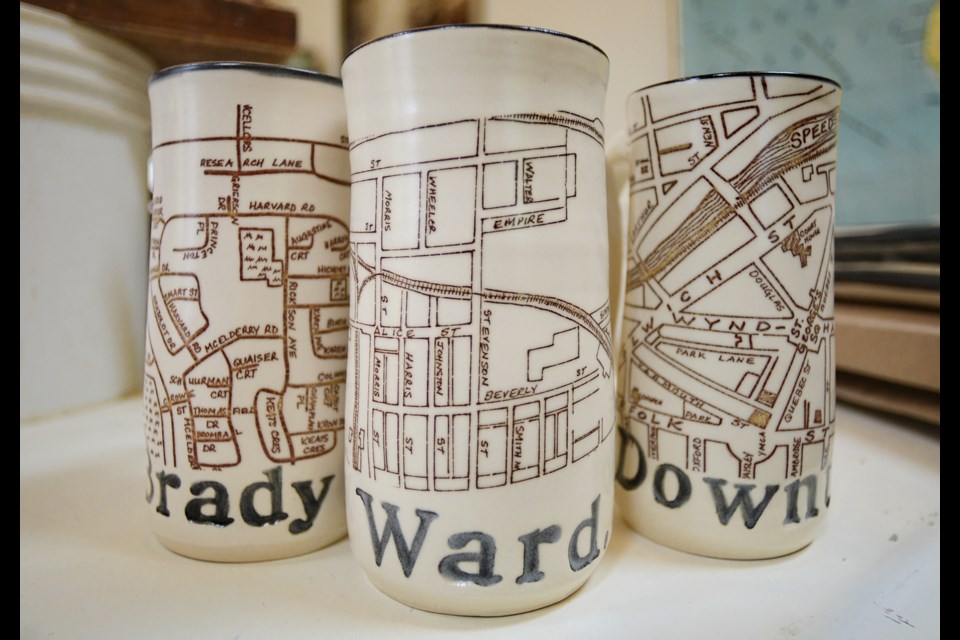Four years ago local potter Bunny Safari created a mug that featured part of a map of old Toronto and the phrase "bloody hell" on it, intended for fans of the Murdoch Mysteries television show.
Somebody saw the mug at a show in Guelph and mistook the map for one of The Ward, the old Guelph neighbourhood sandwiched between York Road and Elizabeth Street.
“I told him it wasn’t The Ward, but asked him if I made a mug with a map of The Ward on it, would he buy it? He said ‘in a heartbeat,'” Safari said.
And so was born one of the most popular items Safari has ever created: a line of mugs, plates and pitchers featuring dated maps of some of Guelph’s most distinct neighbourhoods with vintage type of the neighbourhood’s name featured below.
Safari will have the mugs at the 15th annual Guelph Potters Market, which takes place Saturday and Sunday, May 26 and May 27, at Royal City Park from 10 a.m. to 5 p.m.
For more information on the market, which features over 50 vendors, go to www.guelphpottersmarket.ca.
“I try to make things people want. I don’t just like to make ‘stuff,’” says Safari, who grew up in Georgetown before coming to Guelph for university and never leaving.
The mugs were an instant hit, connecting with people who either lived in the neighbourhoods or grew up in them.
The first 20 sold out at an Art on the Street event and people were mad that she didn’t have more.
She quickly expanded the offerings and the pottery now features 12 distinct Guelph neighbourhoods, including Exhibition Park, Sunny Acres, Wolfond Park, Downtown Guelph and Old University.
People who have moved out of Guelph contact her through her website and order them. There’s even a set somewhere in Australia.
Safari said the mugs featuring The Ward and Exhibition maps are the most popular.
Safari got the vintage maps (most are from 1932) from the Guelph Museum then redraws them by hand. If it’s a custom order she can add a street that wasn’t on the original map.
She uses a vintage typeset lettering from the 1920s that she collected, hand painting after stamping, then three different firings of the clay are part of the process.
“The best part is that the pieces lead to stories from people. I’ve heard so many great stories from the children of immigrants about the neighbourhoods. I love The Ward stories, they’re awesome,” Safari said.
She said the pieces just seem to strike a chord with people.
“They just seem to strike a personal connection to the neighbourhoods,” she says from the converted backyard shed at her home just west of Downtown Guelph that serves as her work studio.
“They’re a thing of beauty to celebrate our city.”
